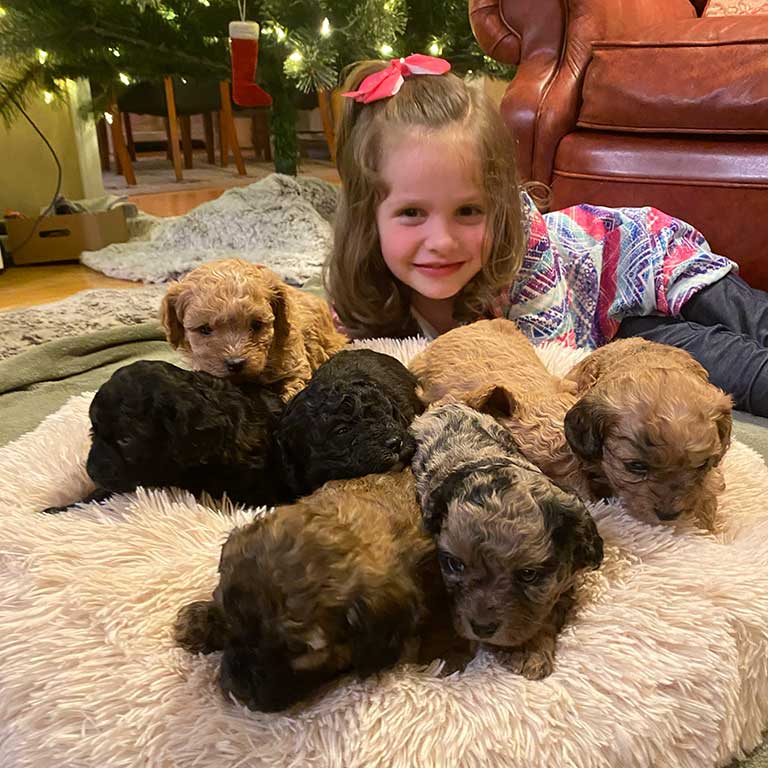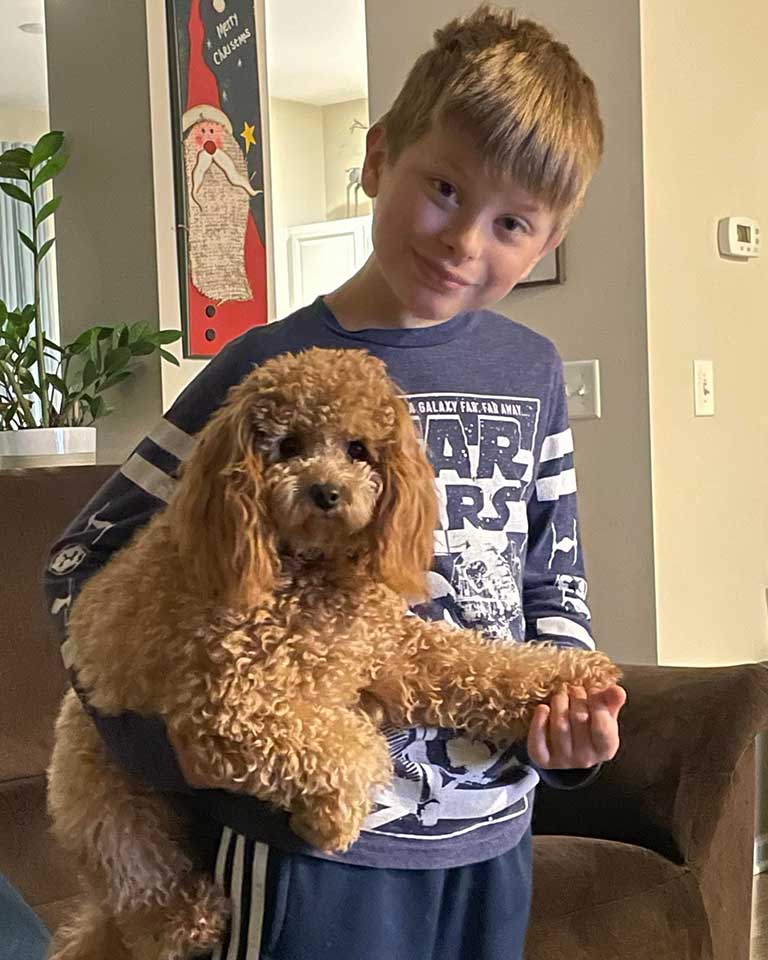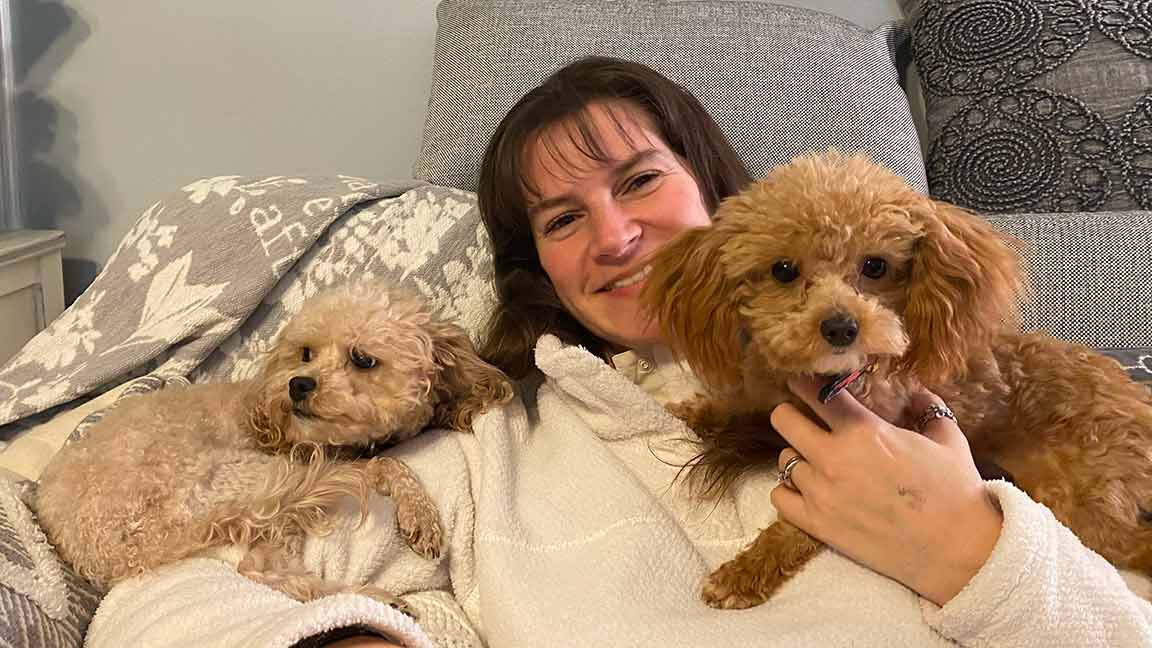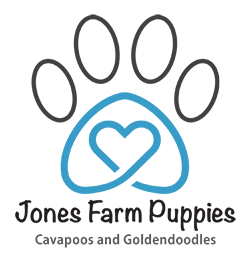
How to Communicate With Your Cavapoo
Living with a Cavapoo is like living with a furry comedian who also has a PhD in emotional intelligence. These lovable little pups have an uncanny ability to read our moods, respond to our voices, and wiggle their way into our hearts. But while they seem to understand us so well, many Cavapoo owners wonder: how can we communicate back to them in a way that’s clear and meaningful?
At Jones Farm Puppies, we believe that communication with your dog is the foundation for building a happy and healthy bond. Luckily, science gives us plenty of insight into how dogs perceive our words, gestures, and emotions. Let’s dive into what the research says and how you can use it to “talk” to your Cavapoo more effectively.

Dogs Really Do Understand Words (Kind Of)
You’ve probably noticed your Cavapoo perking up at the word “walk” or sprinting to the kitchen at the sound of “treat.” That’s not a coincidence. Studies at places like Eötvös Loránd University in Hungary have shown that dogs process human language in a way similar to us. They can distinguish between familiar and unfamiliar words, often relying on context and tone to understand your meaning.
Your Cavapoo may not understand a complete sentence, but they can recognize consistent cues. This means the way you use words matters. If you sometimes say “come here” and other times “come on,” your pup may get confused. Sticking with the same word or phrase every time you want the same behavior makes communication much smoother.
Tone of Voice Matters More Than You Think
Science also tells us that tone plays a significant role in canine communication. A cheerful, high-pitched voice often signals play or affection, while a lower, firmer tone communicates seriousness. Your Cavapoo is paying attention not just to what you say, but how you say it.
Try testing this out: say “good dog” in a flat voice versus a singsong, happy one. Your Cavapoo will likely respond much more enthusiastically to the second version. This is why positive reinforcement training works so well; dogs naturally tune into encouraging, happy tones.

Body Language Is Your Pup’s First Language
Dogs are masters of nonverbal communication. Long before they learn words, Cavapoos (and all puppies) pay attention to body cues. Eye contact, gestures, and even the way you position your shoulders can all tell your dog something.
For example, leaning forward with direct eye contact can feel like pressure, while crouching down with open arms usually feels inviting. Pointing, too, is something dogs understand surprisingly well; they can follow a finger or hand direction much like a toddler would. This makes body language one of your most powerful communication tools.
The Science of Emotional Contagion
Ever notice that when you’re stressed, your Cavapoo seems stressed? That’s not your imagination. Research shows dogs experience “emotional contagion,” which means they can actually pick up on and mirror our emotional states.
This is why being mindful of your own energy is so important when communicating with your pup. If you’re anxious or frustrated, your Cavapoo may misinterpret your signals or respond with nervous energy. But when you’re calm and consistent, your pup feels safe and secure.

Teaching Your Cavapoo Human-Friendly Signals
Communication goes both ways. While you’re learning to “speak Cavapoo,” you can also teach your dog a vocabulary of signals. Many Cavapoos thrive on hand signals paired with verbal cues. For example:
- A flat hand moving downward can mean “lie down.”
- A sweeping hand toward you can mean “come.”
- A raised finger can mean “wait.”
Since dogs are visual learners, pairing these cues with words helps them understand faster and respond more reliably, especially in noisy environments.
Reading Your Cavapoo’s Language
Understanding your Cavapoo is just as important as teaching them to understand you. Look for these standard communication signals:
- Tail wagging: A loose, wiggly wag usually means happiness, but a stiff wag can signal alertness or unease.
- Ears: Forward ears show interest, while pinned-back ears may mean fear or submission.
- Yawning or lip licking: Often signs of stress or uncertainty, not just sleepiness or hunger.
- Play bow: The universal dog invitation to have fun.
By paying attention to these signals, you’ll be better at responding appropriately and keeping your Cavapoo’s trust.
Communication Builds Connection
At Jones Farm Puppies, we’ve seen time and again how clear communication strengthens the Cavapoo–human bond. Families who take the time to understand their pup’s cues and consistently use verbal and nonverbal signals often enjoy fewer behavior problems and more harmony at home.
When your Cavapoo feels understood, they become more confident, relaxed, and eager to please. And when you know your Cavapoo, you’ll find yourself marveling daily at just how intelligent and intuitive these dogs truly are.
To better understand your Cavapoo, check out the answers to other frequently asked questions from our Cavapoo parents.

FAQ
Do Cavapoos really understand words, or just the tone of voice?
Both! Science shows dogs can recognize familiar words, but they rely heavily on tone and consistency to figure out your meaning.
How many words can a Cavapoo learn?
On average, most dogs can learn 100 to 200 words, though some have been recorded knowing over 1,000. Cavapoos are intelligent and often pick up cues quickly.
Can hand signals work better than words?
For many Cavapoos, yes. Since dogs are visual learners, hand signals paired with words often create faster and more reliable communication.
What if my Cavapoo doesn’t seem to listen?
Often, it’s a matter of mixed signals. Check if you’re being consistent with your words, tone, and body language. Staying calm and repeating cues with the same phrasing usually helps.
Why does my Cavapoo bark when I talk on the phone?
This is a form of attention-seeking. Your pup hears your animated tone and may think you’re trying to engage them, too. Redirecting with a toy or command often helps.
Living with a Cavapoo is like living with a furry comedian who also has a PhD in emotional intelligence. These lovable little pups have an uncanny ability to read our moods, respond to our voices, and wiggle their way into our hearts. But while they seem to understand us so well, many Cavapoo owners wonder: how can we communicate back to them in a way that’s clear and meaningful?
At Jones Farm Puppies, we believe that communication with your dog is the foundation for building a happy and healthy bond. Luckily, science gives us plenty of insight into how dogs perceive our words, gestures, and emotions. Let’s dive into what the research says and how you can use it to “talk” to your Cavapoo more effectively.





